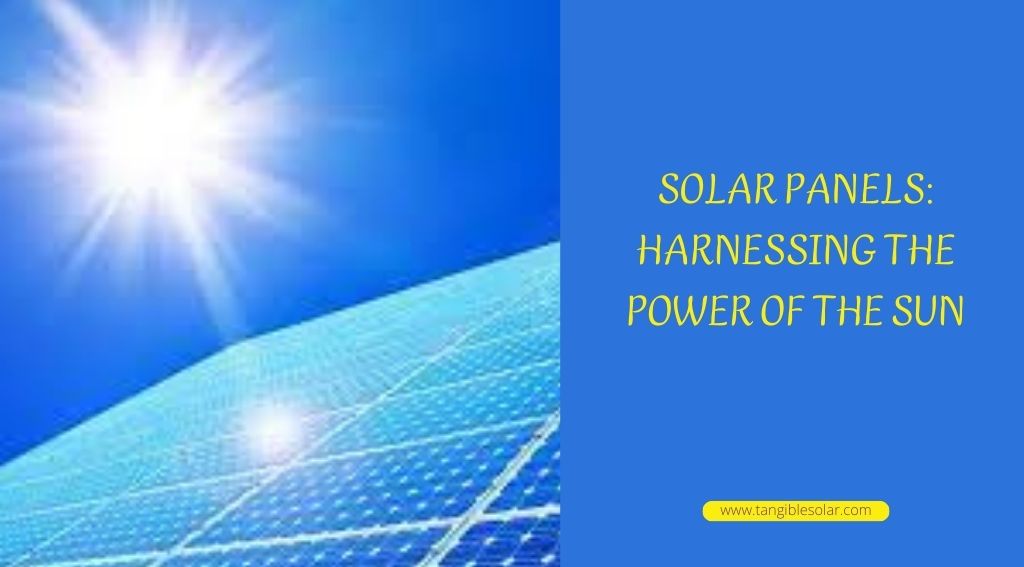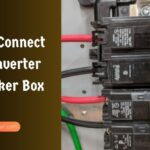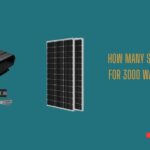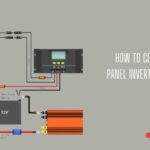How a Solar Inverter Works: Unleashing the Power of Solar Energy
How a solar inverter works transforms the direct current (DC) electricity that solar panels produce into usable alternating current (AC) electricity for powering homes and businesses. Solar energy is becoming an increasingly popular and sustainable source of power.
Its utilization requires the use of a solar inverter, an essential component of a solar energy system. A solar inverter plays a crucial role in ensuring that the electricity generated by solar panels is converted into a usable form of energy for homes and commercial establishments.
The way this device operates is by converting the direct current (DC) electricity that solar panels produce into alternating current (AC), which is the kind of electricity that powers the majority of appliances and gadgets. Understanding how a solar inverter works is fundamental to grasping the functioning and benefits of solar energy systems. We will explore the inner workings of a solar inverter and shed light on its significance in solar energy conversion.
Introduction To Solar Energy
Solar energy is a renewable and sustainable source of power that harnesses the energy of the sun. It is a clean and abundant energy source that has gained immense popularity in recent years.
What are the Best Rechargeable AA Batteries for Solar Lights
Definition Of Solar Energy
Solar energy refers to the energy derived from the sun’s radiation. The sun produces an enormous amount of energy through nuclear fusion, and this energy is harnessed through solar panels to generate electricity. Solar energy is a cost-effective and environmentally friendly alternative to conventional energy sources.
Growing Popularity Of Solar Power
The use of solar power has been steadily increasing worldwide due to several factors. One of the main reasons for its growing popularity is the decreasing cost of solar panels and their installation. As technology advances, the efficiency of solar panels has improved, making solar energy more accessible and affordable for both residential and commercial use.
Another reason for the surge in solar power’s popularity is the increasing awareness of the environmental benefits it offers. Solar energy is clean and produces no harmful emissions, unlike fossil fuels. This makes it a sustainable and renewable energy source, reducing our reliance on non-renewable resources and minimizing the carbon footprint associated with traditional energy generation.
Advantages Of Solar Energy
Solar energy offers numerous advantages over traditional forms of energy. Some key advantages include:
- Solar energy is a renewable energy source that will never run out as long as the sun shines.
- It reduces electricity bills and can even generate revenue through feed-in tariffs, where excess electricity can be sold back to the grid.
- Solar power systems require minimal maintenance, leading to long-term cost savings.
- By using solar energy, individuals and businesses can contribute to reducing greenhouse gas emissions and combating climate change.
- Solar power can provide electricity to remote areas that are not connected to the grid, improving energy access and fostering economic development.
Earth’s Solar Potential
| Country | Solar Potential |
| China | 1,300,000 TWh/year |
| United States | 1,000,000 TWh/year |
| India | 750,000 TWh/year |
| Australia | 650,000 TWh/year |
The Earth has vast solar potential that remains largely untapped. Countries with high solar potential, such as China, the United States, India, and Australia, have the opportunity to harness this energy to meet a significant portion of their electricity needs.
Solar Panels: Harnessing The Power Of The Sun

The use of solar inverters has gained immense popularity in recent years, and solar panels play a crucial role in this renewable energy revolution. Solar panels, also known as photovoltaic (PV) panels, are responsible for capturing sunlight and converting it into usable electricity. Understanding the role of solar panels and how they harness the power of the sun is essential to comprehending the overall functionality of a solar inverter.
How to Connect Solar Panel Inverter And Battery
Role Of Solar Panels In Capturing Sunlight
Solar panels are the backbone of any solar energy system, as they serve to capture sunlight and transform it into electricity. These panels are made up of photovoltaic cells, which are composed of semiconductor materials such as silicon. When sunlight falls on these cells, it kickstarts a process known as the photovoltaic effect, resulting in the production of electrical energy.
Photovoltaic Effect: How Solar Panels Convert Sunlight Into Electricity
The photovoltaic effect allows solar panels to convert sunlight into electricity. When sunlight reaches the surface of a solar panel, it contains microscopic particles called photons. These photons interact with the electrons present in the semiconductor material of the photovoltaic cells. This interaction causes the electrons to gain energy, and they start to move, creating an electric current. This electric current is then harnessed and directed towards a solar inverter for further processing and distribution.
Types Of Solar Panels: Monocrystalline, Polycrystalline, And Thin-film
There are different types of solar panels available on the market, each with its own unique characteristics and efficiencies. The most commonly used types include:
| Types of Solar Panels | Description |
| Monocrystalline | Manufactured using a single crystal structure, monocrystalline panels are recognized for their high efficiency and space-saving design. They are easily recognizable by their uniform black or dark blue color. |
| Polycrystalline | Polycrystalline panels are manufactured by melting multiple fragments of silicon together, resulting in a less uniform appearance with a bluish hue. Although they are slightly less efficient than monocrystalline panels, they are more cost-effective. |
| Thin-film | Thin-film panels are incredibly flexible and lightweight, making them suitable for various applications. They are manufactured by depositing thin layers of semiconductor materials onto a substrate. While they may have lower efficiency compared to crystalline panels, they perform better in low-light conditions. |
Efficiency And Durability Of Solar Panels
Efficiency and durability are critical factors to consider when evaluating the performance of solar panels. Higher efficiency means that a solar panel can convert a greater amount of sunlight into electricity. This is crucial for maximizing energy production and optimizing the return on investment. Additionally, durability ensures that the panels can withstand harsh weather conditions and have a longer lifespan.
Monocrystalline panels have the highest efficiency among the three types, typically ranging from 15% to 20%. Polycrystalline panels have slightly lower efficiency, averaging around 13% to 16%. Thin-film panels offer lower efficiencies, usually ranging from 10% to 12%. However, they compensate for this with increased flexibility and suitability for specific installation scenarios.
When it comes to durability, monocrystalline and polycrystalline panels tend to outperform thin-film panels. Thin-film panels, although less durable, still possess a reasonable level of resilience.
Considering efficiency and durability when choosing solar panels is crucial to ensuring long-term energy production and a return on investment.
The Role Of A Solar Inverter In Solar Power Systems
How a solar inverter works plays a crucial role in the functioning of a solar power system. In essence, it is in charge of converting the direct current (DC) electricity that solar panels produce into usable alternating current (AC) electricity for powering our residences, businesses, and industries. This conversion is necessary because solar panels generate electricity in the form of DC, which is not compatible with the electrical grid and most appliances.
How Many Solar Panels for 3000 Watt Inverter
Definition and Function of a Solar Inverter:
An electronic device known as a solar inverter works to transform the DC electricity that solar panels generate into AC electricity. Its primary function is to ensure that the electricity generated matches the standard voltage and frequency required for our everyday electrical devices to operate efficiently. Solar inverters enable us to use solar panel electricity directly or to feed it back into the grid by converting DC to AC.
The Importance of a Solar Inverter in Solar Energy Systems:
The importance of a solar inverter in solar energy systems cannot be overstated. It serves as the heart of the system, enabling the effective utilization of solar power. Without a solar inverter, the DC electricity produced by solar panels would be rendered unusable, unable to power our homes or contribute to the energy grid. It is the solar inverter that allows us to harness the full potential of solar energy and make it an economically viable alternative to traditional sources of electrical power.
Types Of Solar Inverters: String Inverters, Microinverters, and Power Optimizers
There are various types of solar inverters available on the market, each with its own unique features and advantages. The three most commonly used types include:
- String inverters: These are the traditional and most widely used types of solar inverters. String inverters convert the DC electricity that the string of panels generates into AC electricity.
- Microinverters: Unlike string inverters, microinverters are installed on each individual solar panel. This means that each panel has its own dedicated inverter, allowing for better performance in cases of partial shading or panel mismatch. Microinverters also offer enhanced monitoring capabilities.
- Power optimizers: Similar to microinverters, power optimizers are also installed on each solar panel. They optimize the performance of the panels individually, mitigating the impact of shading or mismatch. Power optimizers, however, work in conjunction with a central inverter, which converts the DC electricity from the panels into AC electricity.
Maximum Power Point Tracking (PPT) in Solar Inverters:
MPPT allows the inverter to continuously adjust the electrical load and extract the maximum amount of power from the solar panels. Solar inverters with MPPT make sure the system works at its most efficient level, which means it generates the most electricity possible. They do this by tracking and adapting to changes in the environment and the output of the panels.
How A Solar Inverter Works: Conversion And Optimization
When it comes to solar power systems, the solar inverter plays a crucial role. It transforms the DC (direct current) electricity that solar panels produce into AC (alternating current), which we can use to power our homes and businesses. Not only does the solar inverter perform this conversion, but it also optimizes the power output, ensures safety, and syncs with the grid.
How to Connect Solar Inverter to Breaker Box
To Ac Conversion In Solar Inverters
The main purpose of a solar inverter is to transform the DC electricity that solar panels produce into AC electricity that is compatible with common electrical appliances. This conversion process is essential because most appliances and power grids operate on AC power. The solar inverter does this by using sophisticated electronic circuitry to convert the energy stored in the solar panels into a usable form.
Safety Features And Protection Against Electrical Surges
Ensuring safety is a critical aspect of solar inverter design. In addition to converting DC to AC, inverters include various safety features to protect both the system and the user. Many modern inverters have built-in protection mechanisms that guard against electrical surges, short circuits, and overheating. These safety measures not only protect the inverter itself but also safeguard the connected devices and electrical systems.
Reactive Power Compensation And Grid Synchronization
A solar inverter not only converts DC to AC but also ensures the synchronization of the generated power with the electrical grid. This synchronization is important for two reasons. First, it makes it possible to feed excess solar power back into the grid, reducing energy waste. Second, it allows the solar system to compensate for reactive power fluctuations, ensuring a stable supply of electricity to the grid.
Importance of Efficient Power Conversion And Optimization
Efficient power conversion and optimization are crucial factors for solar inverters. Inefficient conversion can result in energy losses, reducing the overall efficiency of the solar power system. By continuously monitoring and adjusting current and voltage levels, inverters optimize power conversion, ensuring the maximum utilization of solar energy.
Monitoring And Maintenance Of Solar Inverters
Monitoring and maintaining your solar inverters are crucial steps in ensuring their optimal performance and longevity. With the right approach, you can gain insights into your system’s performance, diagnose any issues, and carry out regular maintenance to keep your solar inverters running smoothly.
Remote Monitoring And Control Capabilities Of Solar Inverters
One of the benefits of modern solar inverters is their remote monitoring and control capabilities. Through advanced technology, you can easily access real-time data on the performance and efficiency of your solar system. This allows you to monitor the energy production, identify any underperforming panels, and make necessary adjustments.
With remote monitoring, you can conveniently check the status of your solar inverters through a web-based platform or even a mobile app. These user-friendly interfaces provide valuable insights into important parameters such as power output, voltage levels, and conversion efficiency. Moreover, they often offer customizable reporting features that allow you to receive regular updates via email or notifications.
Diagnosing And Troubleshooting Common Issues
Despite their reliability, solar inverters can encounter problems from time to time. Identifying and resolving these issues promptly is crucial to ensuring your solar system continues to generate clean energy efficiently. Understanding common problems and how to troubleshoot them can save you time and money in the long run.
Some common issues include grid connection failures, voltage fluctuations, or communication errors. In such cases, your inverter may display error codes or indicators to help you pinpoint the problem. By referring to the inverter manual or contacting technical support, you can often diagnose and resolve the issue without the need for a technician’s assistance.
Pro Tip: Regularly checking the status of your inverters through remote monitoring allows you to catch any anomalous behavior early on, potentially preventing further damage and costly repairs.
Regular Maintenance And Inspection Of Solar Inverters
To ensure your solar inverters operate at their best, it’s essential to perform regular maintenance and inspections. This proactive approach helps identify potential problems before they escalate and ensures that your system continues to generate electricity efficiently.
Here are some maintenance tasks to consider:
- Cleanliness: Keep the inverters and their surroundings clean and free from dust, debris, and obstructions. Regularly inspect and clean the ventilation areas to prevent overheating.
- Visual inspections: Regularly visually inspect the inverters for any signs of physical damage or loose connections. Pay attention to cable connections, cooling fans, and display panels.
- Firmware updates: Check for firmware updates provided by the manufacturer to ensure your inverters are running the latest software versions with enhanced performance and features.
- Regular inspections: Schedule periodic inspections by a qualified technician to perform more in-depth checks, including electrical tests, component inspections, and thermal imaging studies.
Extending The Lifespan Of Solar Inverters Through Proper Care
By following proper care and maintenance practices, you can extend the lifespan of your solar inverters, maximizing the return on your investment in renewable energy. Here are some additional tips to ensure the durability and longevity of your inverters:
- Optimum environmental conditions: Ensure that your solar inverters are placed in a location with adequate ventilation and protection from extreme temperatures, humidity, and direct sunlight.
- Avoid overloading: Ensure that your system is not being overloaded with excessive power generation that exceeds the inverters’ capacity. This can lead to stress on the components and reduce their lifespan.
- Regular performance checks: Routinely monitor the energy output of your solar system to ensure it aligns with expected levels. Any significant discrepancies may indicate a problem with the inverters.
- Professional assistance: If you encounter persistent issues or suspect a fault in your inverters, it’s advisable to seek professional assistance from trained service technicians to diagnose and resolve any complex problems.
By closely monitoring and maintaining your solar inverter works, you can optimize their performance, address any issues promptly, and ensure their longevity. Regular inspections, firmware updates, and proper care play vital roles in preserving the efficiency and reliability of your solar system, allowing you to enjoy clean energy for years to come.
FAQs: How a Solar Inverter Works
How Does A Solar Inverter Work?
A solar inverter converts the DC (direct current) electricity generated by solar panels into AC (alternating current) electricity that can be used to power homes and businesses. It transforms the electricity to a usable form and synchronizes it with the utility grid, allowing excess power to be fed back into the grid or stored in batteries.
This ensures a continuous supply of electricity.
What Are the Types of Solar Inverters?
There are three main types of Solar Inverter Works: string inverters, microinverters, and power optimizers. String inverters connect multiple solar panels in a series; microinverters are installed on each panel individually; and power optimizers optimize the performance of each panel while using a string inverter.
Each type has its own advantages and suitability for different solar installations.
How Efficient Are Solar Inverters?
Solar inverters typically have an efficiency rating of around 95% to 99%. The efficiency of an inverter refers to how well it converts the DC electricity from the solar panels into AC electricity for use in homes and businesses. Higher-efficiency inverters ensure minimal energy loss and maximize the overall performance of the solar power system.
Conclusion
To wrap up, understanding how a solar inverter works is vital to harnessing solar energy efficiently. By converting DC power into AC power, solar inverters enable us to use the electricity generated by solar panels for various appliances. With advancements in technology, solar inverters are becoming smarter and more efficient, contributing to the global shift toward renewable energy.
So embrace solar inverters and join the sustainable movement for a greener future.




